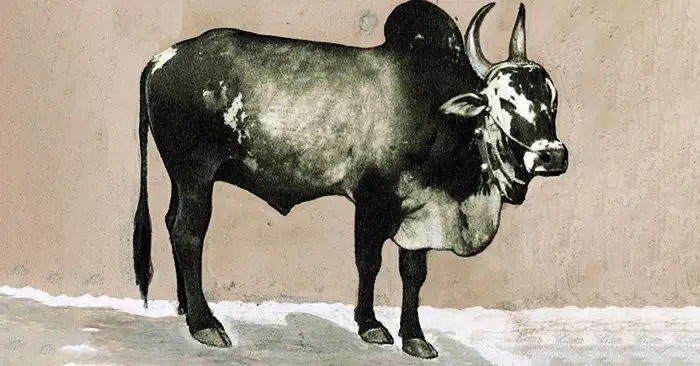The Bargur cattle, native to Tamil Nadu, India, are known for their resilience, adaptability, and significant contribution to local agriculture. This blog provides an in-depth look at various aspects of the Bargur breed, from their physical traits to their economic importance.
Bargur cattle, indigenous to the Bargur hills in Tamil Nadu, are a vital part of the local agrarian culture. These cattle are highly valued for their hardiness, ability to work in hilly terrain, and resistance to local diseases. Traditionally reared by the Lingayat community, Bargur cattle are integral to the rural economy and are celebrated for their productivity and endurance.
Physical Characteristics

Bargur cattle are medium-sized with a distinct appearance. They have a compact and sturdy body, which is well-suited for the rugged terrain of the Bargur hills. The coat color varies but is generally reddish-brown with white patches. Their horns are medium-sized and curved, while the ears are small and alert. They have a well-developed hump and a long, tapering tail. The eyes of Bargur cattle are expressive, reflecting their alert and active nature.
Behavior and Temperament
Bargur cattle are known for their docile yet active temperament. They are intelligent and responsive, making them relatively easy to manage. These cattle are highly adaptable and have a strong instinct for grazing and foraging, which makes them well-suited to the challenging environments of the Bargur hills. They exhibit a calm demeanor, which is beneficial for handling and managing them in various agricultural activities.
Habitat and Climate Adaptability
Bargur cattle are exceptionally well-adapted to the hilly and forested regions of the Bargur hills. They thrive in tropical climates and are well-suited to environments with high temperatures and humidity. Their ability to graze on a variety of vegetation found in their native habitat makes them resilient and less dependent on supplementary feed. This adaptability is one of the key reasons for their survival and productivity in challenging terrains.
Diet and Nutrition
The diet of Bargur cattle primarily consists of natural forage found in their native habitat. They graze on a variety of grasses, herbs, and shrubs, which provide them with the necessary nutrients. In addition to grazing, they may be supplemented with agricultural by-products such as rice straw, maize, and other locally available fodders. Providing clean water and mineral supplements is essential to maintain their health and productivity.
Health and Lifespan
Bargur cattle are known for their robust health and resistance to local diseases. They have a strong immune system, which helps them withstand the harsh climatic conditions of their native habitat. Regular health check-ups, vaccinations, and deworming are important to ensure their well-being. With proper care and management, Bargur cattle can live up to 15 years or more, contributing to the agricultural needs of the region throughout their lifespan.
Productivity
Bargur cattle are primarily used for draught purposes due to their strength and endurance. They are efficient in plowing fields and transporting goods, making them invaluable to local farmers. Additionally, they produce milk, although the yield is relatively lower compared to specialized dairy breeds. The milk is rich in fat and is often used for making traditional dairy products.
Breeding and Calving
Breeding Bargur cattle typically follows natural methods, with bulls kept within the herd. The calving interval is generally around 12 to 14 months, and cows exhibit strong maternal instincts, ensuring the well-being of their calves. Proper nutrition and care during the gestation period are crucial to ensure healthy calving and to maintain the overall productivity of the herd.
Care and Management
Effective care and management of Bargur cattle involve providing a balanced diet, regular health check-ups, and maintaining clean and comfortable housing. Access to clean water and adequate shelter from extreme weather conditions is essential. Farmers should also focus on proper breeding practices to ensure the genetic diversity and health of the herd.
Significance and Uses
Bargur cattle play a significant role in the agricultural economy of the Bargur hills. They are indispensable for plowing, transportation, and other farm activities. Their milk, though produced in smaller quantities, is valued for its nutritional content. Additionally, Bargur cattle contribute to the conservation of biodiversity in their native region by grazing on local vegetation, which helps maintain the ecological balance.
Conservation Status
Bargur cattle are considered a heritage breed, and their population has been declining due to modernization and changes in agricultural practices. Efforts are being made by local communities and organizations to conserve this breed through sustainable farming practices and breeding programs. Conservation of Bargur cattle is crucial to preserving the cultural and agricultural heritage of the Bargur hills.
Image Source: https://www.livemint.com/Sundayapp/4nYzmXLuY0COsjCegd0DjI/Meal-with-millets-on-the-hills-of-Bargur.html






